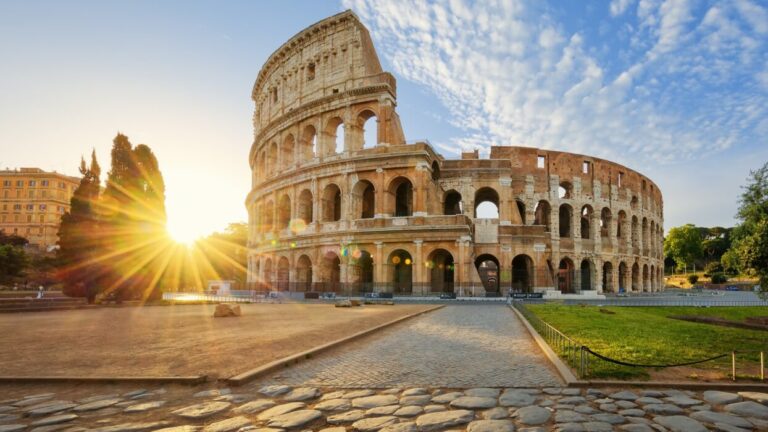Rome, the Eternal City, is a living mosaic of history, art, and culture. As the heart of ancient civilization, the capital of the Roman Empire, and the epicenter of the Renaissance, Rome has influenced the world for thousands of years. Every street, piazza, and monument tells a story, inviting visitors to immerse themselves in a city where the past and present harmoniously coexist. From the awe-inspiring ruins of ancient temples to the intricate beauty of Baroque fountains, Rome is a city that ignites the imagination and stirs the soul.
For first-time travelers and seasoned explorers alike, Rome offers an endless array of experiences. Stroll through cobblestone streets where Julius Caesar once walked, marvel at masterpieces by Michelangelo and Bernini, or savor authentic Italian cuisine in charming trattorias. Beyond its iconic landmarks like the Colosseum and Vatican City, the city is filled with hidden treasures waiting to be discovered. Whether you’re drawn to its rich history, religious heritage, or vibrant modern life, Rome promises to enchant and inspire at every turn.
This guide takes you on a journey through the Top 50 Attractions in Rome, highlighting the most iconic sites and lesser-known gems. With detailed insights into each destination, this guide will help you uncover the best of what Rome has to offer and craft an unforgettable adventure in the Eternal City.
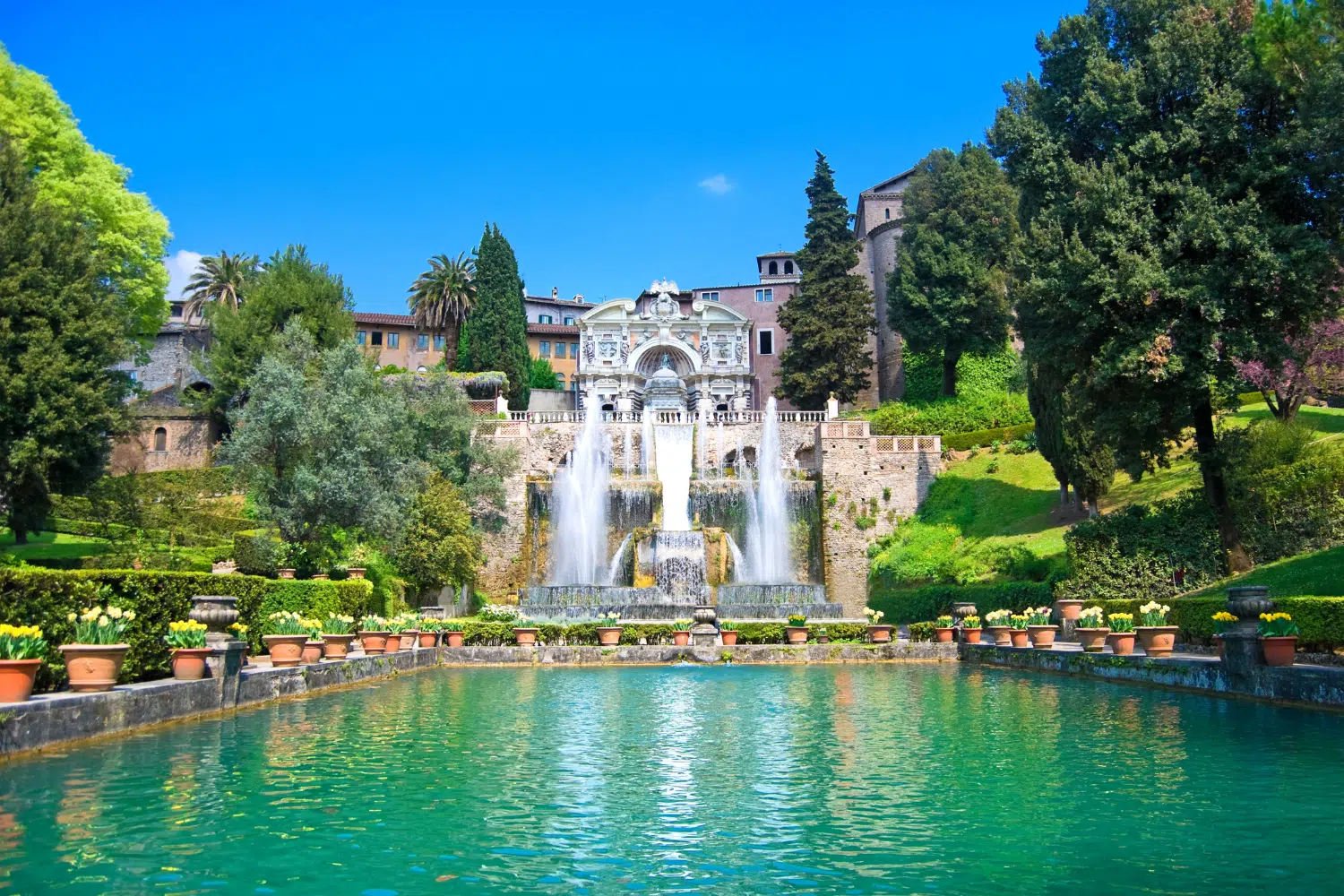
1. The Colosseum
The Colosseum stands as a monument to the architectural brilliance and cultural dynamism of ancient Rome. Constructed between 70 and 80 AD under the emperors Vespasian and Titus, this colossal amphitheater could hold up to 50,000 spectators. It was a venue for gladiatorial contests, animal hunts, and public spectacles, which were designed to entertain and assert the power of Rome. Walking through its massive arches, visitors can still feel the echoes of roaring crowds and the clash of combat. The underground hypogeum, where gladiators and animals were kept before events, offers a deeper understanding of its complex logistics. Climbing to the upper levels rewards visitors with breathtaking views of the city and the nearby Roman Forum. Today, the Colosseum symbolizes the resilience of Rome, continuing to captivate millions of tourists annually.
2. The Roman Forum
Once the heart of political, social, and commercial life in ancient Rome, the Roman Forum is now a sprawling archaeological site filled with ruins that evoke its former glory. This was the place where the Roman Senate convened, emperors gave speeches, and citizens gathered to worship, trade, and debate. Highlights include the Temple of Saturn, one of the oldest structures, and the Arch of Titus, which commemorates Roman victories. Wandering through the Forum’s ruins, one can imagine the grandeur of ancient Rome at its peak. With a guided tour or an audio guide, visitors can gain deeper insights into the importance of each structure and how they contributed to the empire’s functioning. The Forum is especially stunning at sunset, when the golden light enhances the beauty of the remaining columns and stone pathways.
3. The Pantheon
The Pantheon is a marvel of ancient Roman engineering and one of the best-preserved monuments of its time. Originally built as a temple for all Roman gods, the structure as we see it today was commissioned by Emperor Hadrian around 118–125 AD. Its dome, with a central oculus, remains an architectural wonder even in modern times. The oculus not only illuminates the interior but also serves as a symbolic connection to the heavens. Inside, the grand space is adorned with intricate marble and houses the tombs of significant figures, including the Renaissance artist Raphael. Today, the Pantheon functions as a Catholic church, preserving its spiritual significance. Standing under its massive dome, one can truly appreciate the ingenuity of ancient Roman architects, who created a structure that has inspired countless buildings around the world.
4. Vatican City
Nestled within Rome is Vatican City, the smallest country in the world but one with an unparalleled cultural and religious impact. As the seat of the Roman Catholic Church, it attracts millions of pilgrims and tourists every year. The centerpiece of Vatican City is St. Peter’s Basilica, an architectural masterpiece filled with priceless art and religious significance. The Vatican Museums house an extensive collection of art and artifacts, including Michelangelo’s iconic frescoes in the Sistine Chapel. Beyond the museums, the Vatican Gardens offer a serene escape, with beautifully manicured landscapes and fountains. Visitors can also witness the Pope during the weekly papal audience, a moving experience for many. Whether for its religious importance or its artistic treasures, Vatican City remains a must-visit destination for anyone exploring Rome.
5. St. Peter’s Basilica
St. Peter’s Basilica is not only a spiritual center for Catholics but also an architectural and artistic gem that represents the pinnacle of Renaissance design. Constructed over a period of more than a century, with contributions from Michelangelo, Bernini, and Bramante, the basilica is a marvel of grandeur and detail. The massive dome, designed by Michelangelo, dominates Rome’s skyline and offers unparalleled views for those who climb to its summit. Inside, the basilica is adorned with intricate mosaics, sculptures, and the awe-inspiring Baldachin by Bernini. Beneath the main altar lies the tomb of St. Peter, one of Jesus’s apostles and the first pope, lending deep spiritual significance to the site. Visiting St. Peter’s Basilica is an unforgettable experience, blending divine inspiration with artistic brilliance.
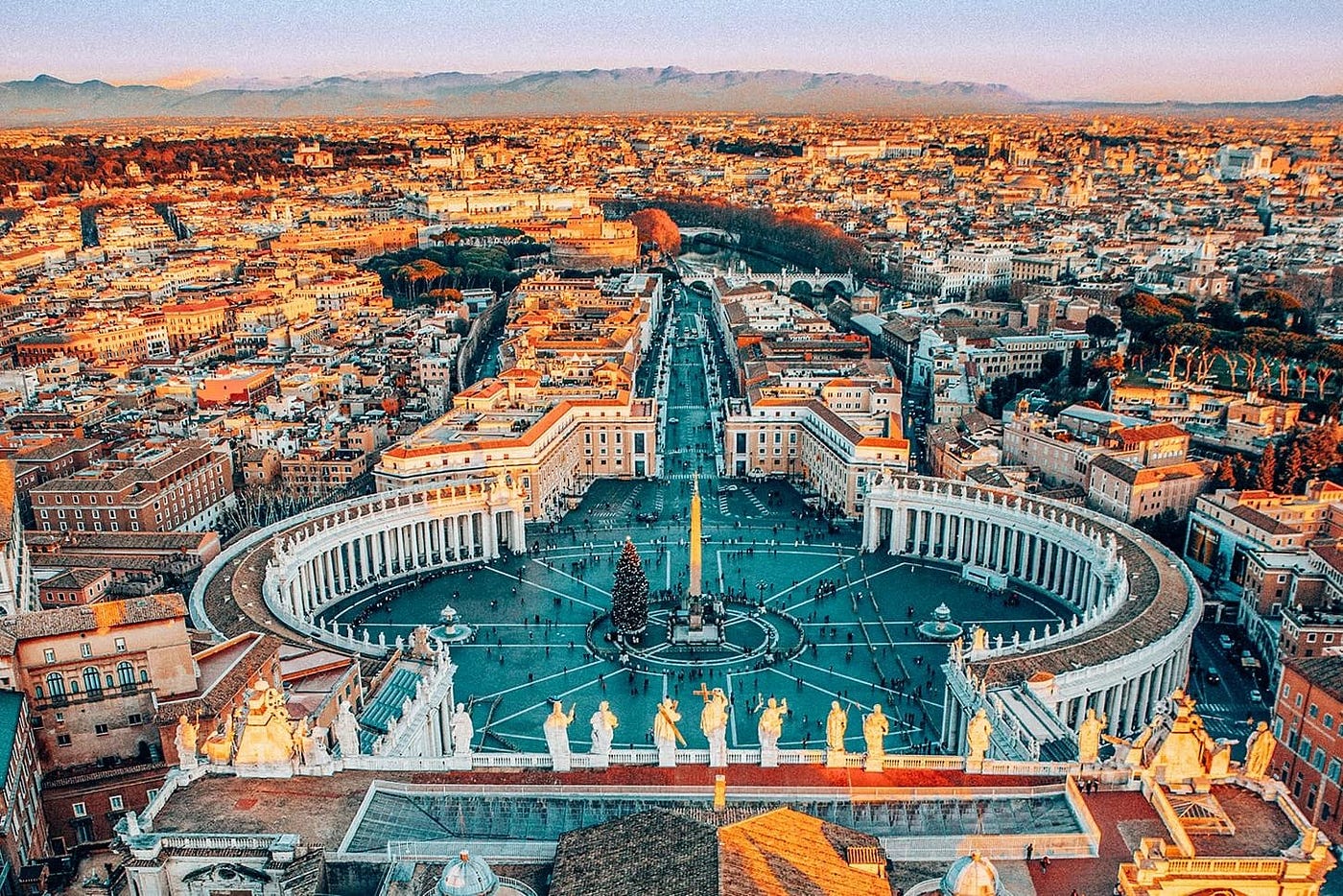
6. The Sistine Chapel
The Sistine Chapel is one of the most famous art spaces in the world, thanks to Michelangelo’s stunning frescoes that adorn its ceiling and altar wall. Painted between 1508 and 1512, the ceiling depicts scenes from the Book of Genesis, including the iconic “Creation of Adam.” The altar wall features “The Last Judgment,” a powerful and intricate portrayal of humanity’s ultimate fate. Beyond its artistic importance, the chapel holds a vital place in Catholic tradition as the site of papal conclaves, where new popes are elected. Visitors can spend hours marveling at the frescoes, which showcase Michelangelo’s unparalleled skill and his ability to convey deep emotion and narrative. The Sistine Chapel is part of the Vatican Museums, and seeing it in person is often a transformative experience for art enthusiasts and casual visitors alike.
7. The Trevi Fountain
The Trevi Fountain is more than just a Baroque masterpiece; it’s a symbol of Rome’s romantic allure. Completed in 1762, the fountain features a dramatic depiction of Neptune, the god of the sea, surrounded by tritons and sea horses. Its cascading waters and ornate sculptures make it one of the most photographed landmarks in the city. Tradition dictates that tossing a coin into the fountain ensures a return to Rome, a custom that sees thousands of visitors participating each day. The funds collected from the fountain are donated to charity, adding a meaningful aspect to this lighthearted tradition. Visiting the Trevi Fountain at night, when it’s beautifully illuminated, is a magical experience that highlights its intricate details and creates an unforgettable ambiance.
8. The Spanish Steps
The Spanish Steps, a grand staircase of 135 steps, is one of Rome’s most beloved landmarks and a hub of activity. Built in the early 18th century to connect the Piazza di Spagna with the Trinità dei Monti church, the steps have long been a gathering place for locals and tourists alike. The area is surrounded by high-end boutiques, art galleries, and cafes, making it a vibrant spot for shopping and people-watching. At the base of the steps, the Barcaccia Fountain, designed by Bernini, adds to the charm of the piazza. Climbing to the top offers a rewarding view of the bustling streets below and a chance to explore the historic church. The Spanish Steps are particularly enchanting in spring when they’re adorned with colorful flowers, creating a picturesque setting for photos.
9. Piazza Navona
Piazza Navona is a lively square that showcases Rome’s Baroque splendor. Built on the site of an ancient Roman stadium, the square retains its elongated shape and is surrounded by elegant buildings and bustling cafes. Its centerpiece is Bernini’s Fountain of the Four Rivers, a stunning work of art representing the major rivers of the four continents known at the time. Street performers, artists, and vendors bring energy to the piazza, making it an excellent place to relax and soak in Rome’s atmosphere. The Church of Sant’Agnese in Agone, with its impressive Baroque façade, adds a spiritual element to the square. Whether visiting during the day or evening, Piazza Navona is a vibrant and enchanting part of the city.
10. Campo de’ Fiori
Campo de’ Fiori, meaning “Field of Flowers,” is a lively square that perfectly captures the essence of Roman daily life. In the morning, it hosts one of Rome’s oldest and most famous open-air markets, where locals shop for fresh fruits, vegetables, flowers, and other delicacies. Vendors selling artisanal products and souvenirs also add to the market’s vibrant atmosphere. By evening, the square transforms into a social hub, with its numerous bars and restaurants attracting a mix of locals and tourists. The statue of Giordano Bruno, a philosopher who was executed here in 1600, stands as a reminder of the square’s historical significance. A visit to Campo de’ Fiori offers a taste of both traditional Roman culture and its lively modern character.
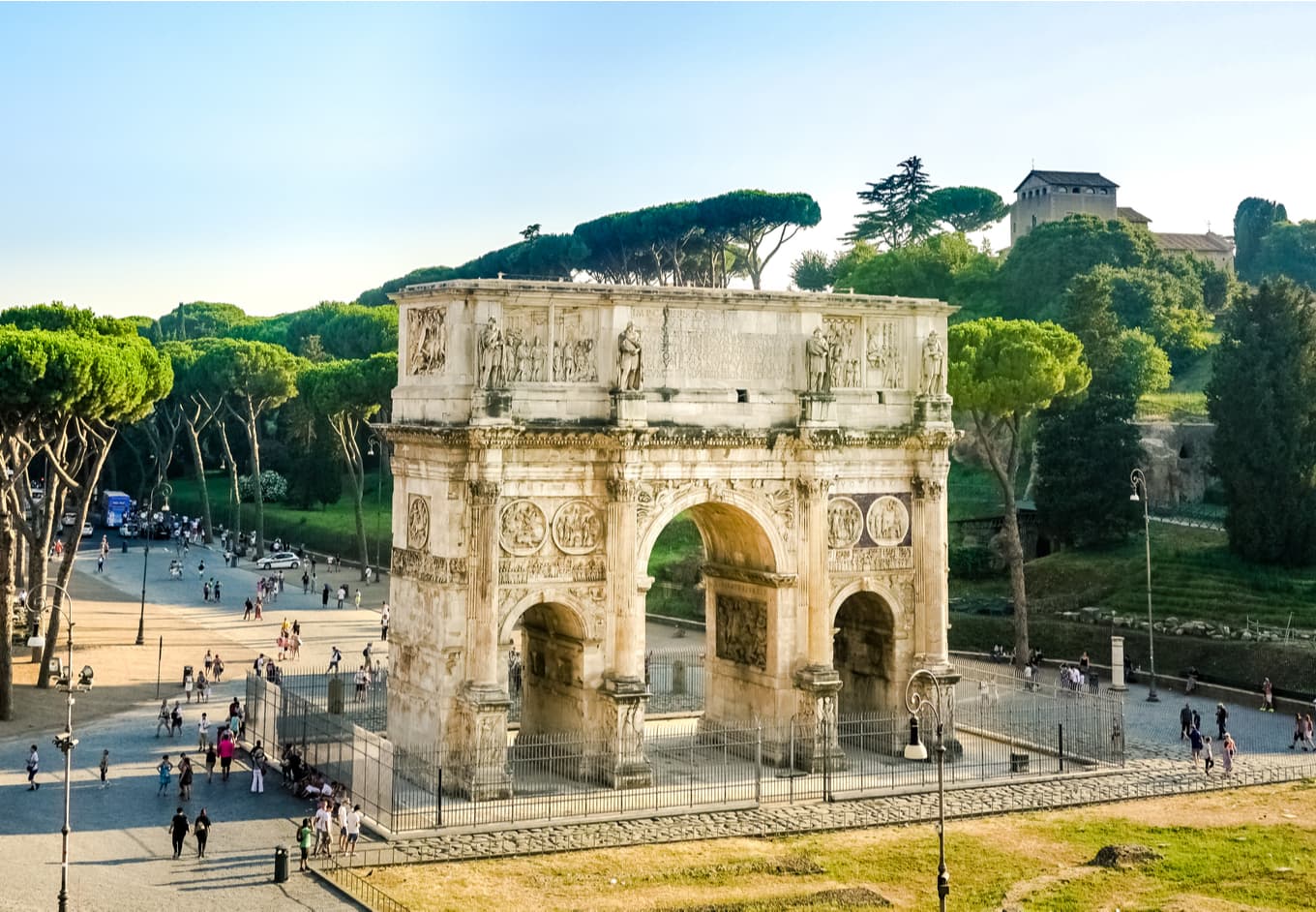
11. The Capitoline Hill and Capitoline Museums
The Capitoline Hill, one of Rome’s legendary seven hills, is a place of great historical and cultural importance. In ancient times, it was the religious and political center of the city, housing temples to Jupiter and other deities. Today, it is home to the Capitoline Museums, which hold one of the most extensive collections of Roman art and artifacts. Highlights include the bronze statue of the She-Wolf suckling Romulus and Remus, a symbol of Rome’s founding myth, and the colossal remains of a statue of Constantine. The piazza, designed by Michelangelo, is an architectural masterpiece that offers stunning views of the Roman Forum. Exploring this area provides a deep dive into the art, history, and mythology of ancient Rome.
12. Villa Borghese and Borghese Gallery
Villa Borghese is a sprawling park that serves as a green oasis in the heart of Rome. It’s the perfect place for a leisurely stroll, a bike ride, or even a picnic. At its center lies the Borghese Gallery, one of the most prestigious art museums in the city. The gallery boasts an impressive collection of works by renowned artists such as Caravaggio, Bernini, Raphael, and Titian. Highlights include Bernini’s masterful sculpture of Apollo and Daphne and Caravaggio’s gripping paintings. The park itself is dotted with fountains, statues, and scenic viewpoints, including the Pincio Terrace, which offers breathtaking views of Piazza del Popolo. Villa Borghese combines natural beauty with cultural treasures, making it a must-visit destination in Rome.
13. The Catacombs of Rome
Hidden beneath the bustling streets of Rome are the catacombs, a network of underground burial sites that date back to the early days of Christianity. These tunnels served as places of refuge and worship for persecuted Christians and now provide a fascinating glimpse into the city’s religious history. The Catacombs of San Sebastiano, San Callisto, and Priscilla are among the most well-preserved and frequently visited. Guided tours take visitors through narrow passageways lined with ancient tombs and frescoes, some of which depict early Christian symbols and scenes. Exploring the catacombs is a haunting yet enlightening experience, offering a unique perspective on Rome’s spiritual and historical layers.
14. The Palatine Hill
The Palatine Hill, steeped in legend and history, is considered the birthplace of Rome. According to mythology, it was here that Romulus founded the city after defeating his twin brother Remus. Archaeological evidence reveals that the hill was home to Rome’s earliest settlements, dating back to the 10th century BC. Later, it became a prestigious residential area for emperors and aristocrats. Today, visitors can explore the ruins of imperial palaces, temples, and gardens while enjoying panoramic views of the Roman Forum and Circus Maximus. The Palatine Hill’s serene atmosphere and rich history make it a highlight of any visit to the ancient center of Rome.
15. The Baths of Caracalla
The Baths of Caracalla, built in the 3rd century AD, were among the largest and most luxurious public baths in ancient Rome. Covering an area of over 27 acres, the complex included not only baths but also libraries, exercise areas, and gardens. Although much of the structure is now in ruins, its sheer size and intricate details still impress visitors. Mosaic floors, marble remnants, and towering columns hint at the grandeur of this ancient spa. Exploring the baths offers insight into the daily lives of Romans and their sophisticated engineering capabilities. During the summer months, the site hosts opera performances, adding a cultural dimension to its historic allure.

16. Piazza Venezia and the Vittorio Emanuele II Monument
Piazza Venezia is a central hub in Rome, dominated by the imposing Vittorio Emanuele II Monument, also known as the “Altar of the Fatherland.” This massive white marble structure was built to honor Victor Emmanuel II, the first king of unified Italy. Visitors can climb to the top of the monument for sweeping views of the city, including landmarks such as the Colosseum and the Roman Forum. The piazza itself is a bustling area, surrounded by historic buildings and streets leading to other major attractions. The monument’s grandeur and symbolism make it a must-see for those exploring the political and cultural history of modern Italy.
17. The Janiculum Hill
While not one of Rome’s original seven hills, the Janiculum Hill offers some of the best panoramic views of the city. Located across the Tiber River, this peaceful area is rich in history and charm. It is home to landmarks such as the Fontana dell’Acqua Paola, a stunning Baroque fountain, and the Garibaldi Monument, which honors the hero of Italian unification. The hill is also a popular spot for locals to relax and enjoy the views, particularly at sunset. For those looking to escape the crowds and experience a quieter side of Rome, the Janiculum Hill is a perfect choice.
18. Trastevere Neighborhood
Trastevere, located on the west bank of the Tiber River, is one of Rome’s most charming and picturesque neighborhoods. Its narrow cobblestone streets, colorful buildings, and lively piazzas exude a bohemian vibe. The area is known for its vibrant nightlife, with numerous bars and trattorias offering authentic Roman cuisine. Highlights include the Basilica of Santa Maria in Trastevere, one of the oldest churches in Rome, and the Gianicolo Hill, which provides stunning views of the city. Trastevere’s unique blend of history, culture, and modern energy makes it a favorite among locals and visitors alike.
19. The Jewish Ghetto
The Jewish Ghetto in Rome, one of the oldest in the world, is a neighborhood steeped in history and culture. Established in 1555 under Papal decree, it was a walled area where the city’s Jewish population was confined. Despite its tragic past, the ghetto is now a vibrant district with a unique blend of history, architecture, and gastronomy. Visitors can explore the ruins of the Portico of Octavia, the nearby Teatro di Marcello (an ancient theater), and the Synagogue of Rome, which houses a museum dedicated to Jewish heritage. The ghetto is also famous for its culinary offerings, particularly traditional Roman-Jewish dishes like fried artichokes (carciofi alla giudia). A stroll through the narrow streets of this historic area is both a reflective and enriching experience.
20. Piazza del Popolo
Piazza del Popolo is one of Rome’s grandest squares, featuring an elegant design that has served as a gateway to the city for centuries. The piazza is adorned with fountains, obelisks, and statues, creating a harmonious blend of art and architecture. Key landmarks include the twin churches of Santa Maria in Montesanto and Santa Maria dei Miracoli, as well as the Basilica of Santa Maria del Popolo, which houses masterpieces by Caravaggio and Bernini. The nearby Pincio Terrace offers a breathtaking view of the square and the city skyline, making it a popular spot for sunsets. Piazza del Popolo is not only a historical landmark but also a lively gathering place for locals and visitors.
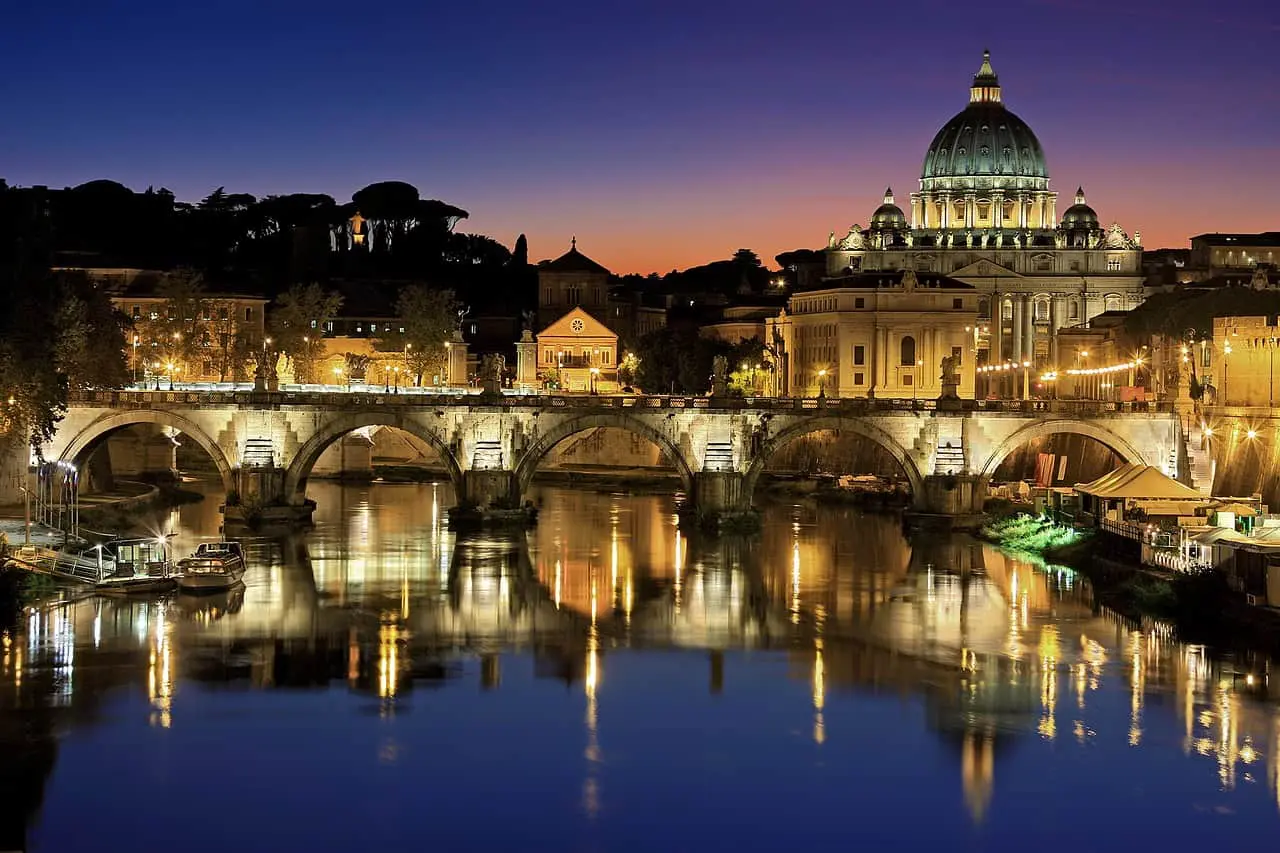
21. Testaccio Neighborhood
Testaccio, often referred to as the culinary heart of Rome, is a district that offers an authentic taste of local life. Historically an industrial area, it is now known for its vibrant food scene and traditional markets. The Testaccio Market is a must-visit for food lovers, offering everything from fresh produce to handmade pasta and classic Roman street food like supplì (fried rice balls). The neighborhood is also home to Monte Testaccio, an ancient artificial hill made entirely of broken amphorae (clay pots), and the Pyramid of Cestius, a unique Roman tomb with an Egyptian-inspired design. Testaccio’s blend of history, culture, and gastronomy makes it a hidden gem in the Eternal City.
22. Via Appia Antica (Appian Way)
The Appian Way, one of the oldest roads in Rome, offers a journey through the city’s ancient past. Built in 312 BC, this historic route connected Rome to southern Italy and was a vital artery for commerce and military movement. Today, the Via Appia Antica is a peaceful and picturesque path lined with ancient tombs, aqueducts, and ruins. Rent a bike or take a leisurely walk to explore landmarks like the Tomb of Cecilia Metella and the Catacombs of San Sebastiano. The surrounding countryside and quiet atmosphere provide a welcome contrast to Rome’s bustling city center, making the Appian Way a favorite for history enthusiasts and nature lovers alike.
23. Basilica of San Clemente
The Basilica of San Clemente is a remarkable church that reveals Rome’s layered history. This unique site consists of three levels, each representing a different era. The topmost level is a 12th-century basilica adorned with stunning mosaics and frescoes. Beneath it lies a 4th-century church, and even further below are the remains of a 1st-century Roman house and a Mithraic temple. Visitors can descend through these layers to uncover the city’s evolution over centuries. The basilica’s rich history, combined with its artistic and architectural beauty, makes it one of Rome’s most fascinating religious sites.
24. The Basilica of Saint Paul Outside the Walls
One of Rome’s four major basilicas, the Basilica of Saint Paul Outside the Walls, is a serene and majestic site located just outside the city center. Built on the burial site of Saint Paul, this basilica is renowned for its grandeur and tranquility. The vast interior features ornate mosaics, beautiful frescoes, and the portraits of every pope in history. The peaceful cloister and lush garden add to the basilica’s charm, offering visitors a quiet space for reflection. Its relative distance from the busy city center means it is often less crowded, allowing for a more relaxed and immersive experience.
25. Piazza Campo Marzio
Campo Marzio is a historic district in central Rome that boasts a mix of elegant streets, historic landmarks, and high-end shopping. Its main square, Piazza Campo Marzio, is surrounded by beautiful palaces and offers a quieter atmosphere compared to Rome’s more famous piazzas. Nearby attractions include the Church of San Lorenzo in Lucina and Via del Corso, one of the city’s busiest shopping streets. The area is perfect for leisurely exploration, combining cultural landmarks with modern luxury.
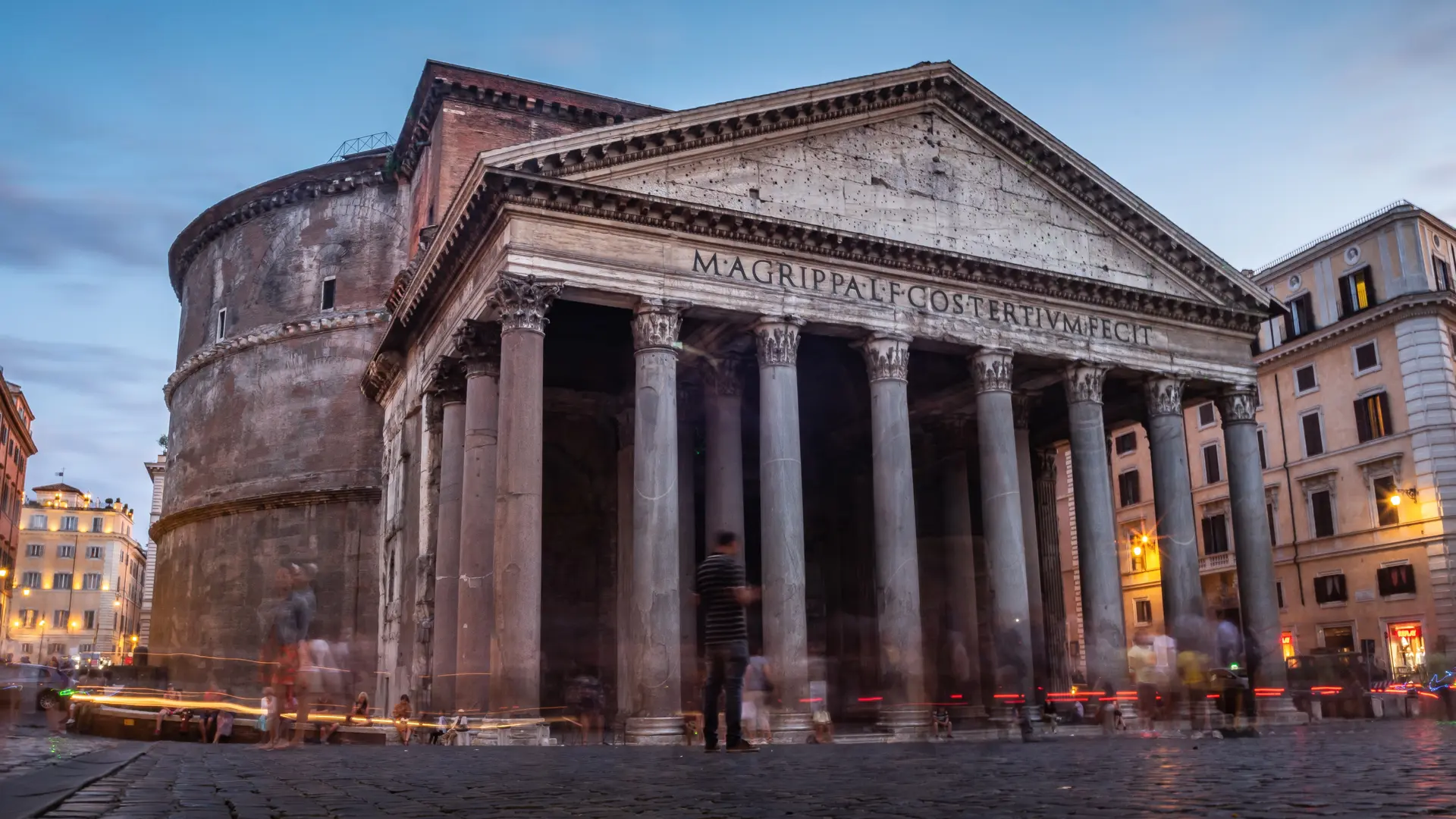
26. Villa Doria Pamphili
Rome’s largest landscaped park, Villa Doria Pamphili, offers a tranquil escape from the city’s hustle and bustle. Once the private estate of the Pamphili family, the park features lush gardens, wooded trails, and a stunning villa that now serves as a cultural center. It’s an ideal spot for jogging, picnicking, or simply enjoying nature. The park’s vast expanse and serene atmosphere make it a favorite among locals seeking relaxation.
27. Basilica di Santa Maria Maggiore
The Basilica di Santa Maria Maggiore is one of Rome’s most important churches and a masterpiece of Christian art and architecture. Built in the 5th century, it features intricate mosaics that depict scenes from the Old Testament, as well as a beautifully decorated interior with marble and gold accents. The basilica’s chapels, including the Sistine Chapel (not to be confused with the one in the Vatican), are adorned with stunning frescoes and sculptures. Its historical and artistic significance makes it a must-visit destination for those exploring Rome’s religious heritage.
28. Tiber Island (Isola Tiberina)
Tiber Island, a small island in the middle of the Tiber River, is a unique and historic part of Rome. Connected to the city by ancient bridges, the island has been associated with healing and medicine since Roman times. Today, it features the historic Church of San Bartolomeo and a charming riverside promenade. In the summer months, the island hosts outdoor film screenings, festivals, and pop-up restaurants, making it a lively destination. Its intimate atmosphere and picturesque views make Tiber Island a delightful addition to any Roman itinerary.
29. Piazza Barberini and the Triton Fountain
Piazza Barberini is a lively square that blends history, art, and local charm. It is home to the stunning Triton Fountain (Fontana del Tritone), a masterpiece by Gian Lorenzo Bernini. The fountain features a striking depiction of the sea god Triton blowing into a conch shell, symbolizing his power over the waters. The square is surrounded by cafes and restaurants, making it a perfect spot to relax while soaking in the artistic atmosphere. Nearby, visitors can explore the Palazzo Barberini, which houses the National Gallery of Ancient Art, showcasing works by Caravaggio, Raphael, and Titian.
30. The Quirinal Palace
The Quirinal Palace, located on the Quirinal Hill, is one of the official residences of the President of Italy and one of the largest palaces in the world. Once home to popes and kings, this grand building boasts stunning architecture, opulent interiors, and sprawling gardens. Visitors can take guided tours to see its lavish rooms, art collections, and historic furnishings. The weekly changing of the guard ceremony outside the palace adds a touch of tradition and spectacle to the visit. The palace’s commanding position also offers excellent views of Rome’s rooftops.
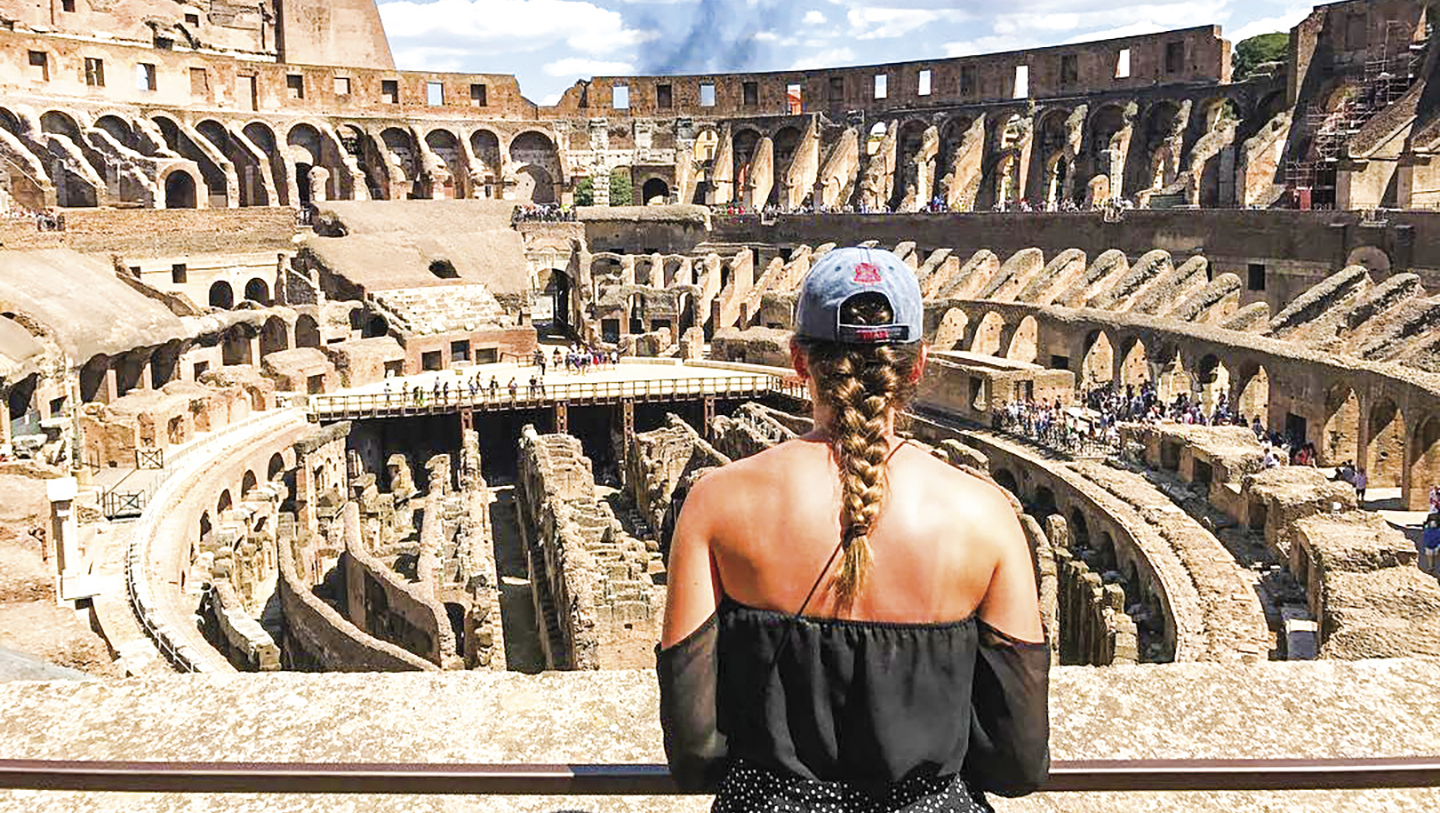
31. Santa Maria in Trastevere
Located in the heart of Trastevere, Santa Maria in Trastevere is one of the oldest churches in Rome. Its origins date back to the 3rd century, and its current structure was built in the 12th century. The church is renowned for its shimmering mosaics, which depict scenes from the life of the Virgin Mary. The peaceful interior, with its golden apse and elegant columns, provides a serene retreat from the bustling streets outside. The piazza in front of the church is a lively gathering place, surrounded by cafes and restaurants that exude Trastevere’s bohemian charm.
32. Palazzo Doria Pamphilj
The Palazzo Doria Pamphilj is a hidden gem in the heart of Rome, offering a glimpse into the opulent lifestyle of a noble Roman family. This privately owned palace features an impressive art gallery that includes works by Caravaggio, Velázquez, and Titian. The highlight of the collection is Velázquez’s portrait of Pope Innocent X, a masterpiece of Baroque portraiture. The palace’s lavishly decorated rooms, adorned with gilded mirrors, frescoes, and antique furnishings, create a regal ambiance. An audio guide narrated by a family member adds a personal touch to the experience.
33. Ponte Sant’Angelo
Ponte Sant’Angelo, also known as the Bridge of Angels, is one of Rome’s most picturesque bridges. Built by Emperor Hadrian in 134 AD to connect the city with his mausoleum (now Castel Sant’Angelo), the bridge is adorned with ten angel sculptures designed by Bernini and his pupils. Each angel holds an object related to the Passion of Christ, adding a spiritual dimension to the bridge’s beauty. Crossing the bridge offers stunning views of the Tiber River and the Vatican, making it a favorite spot for photographers and romantics alike.
34. Castel Sant’Angelo
Originally built as Emperor Hadrian’s mausoleum, Castel Sant’Angelo has served various roles over the centuries, including a fortress, papal residence, and prison. Today, it is a museum that showcases artifacts from its long history, as well as offering panoramic views of Rome from its terrace. The castle’s spiral ramp, frescoed rooms, and papal apartments provide a fascinating journey through time. Its proximity to the Vatican makes it a convenient addition to a day exploring the area.
35. Piazza Farnese
Piazza Farnese is a charming square that exudes elegance and tranquility. Dominated by the Palazzo Farnese, a grand Renaissance palace that now houses the French Embassy, the square features two fountains made from ancient Roman baths. The peaceful atmosphere of Piazza Farnese makes it a perfect spot to relax, away from the hustle and bustle of Rome’s busier attractions. Its proximity to Campo de’ Fiori and other lively neighbourhoods ensures that it’s an excellent stop on a walking tour of the city.
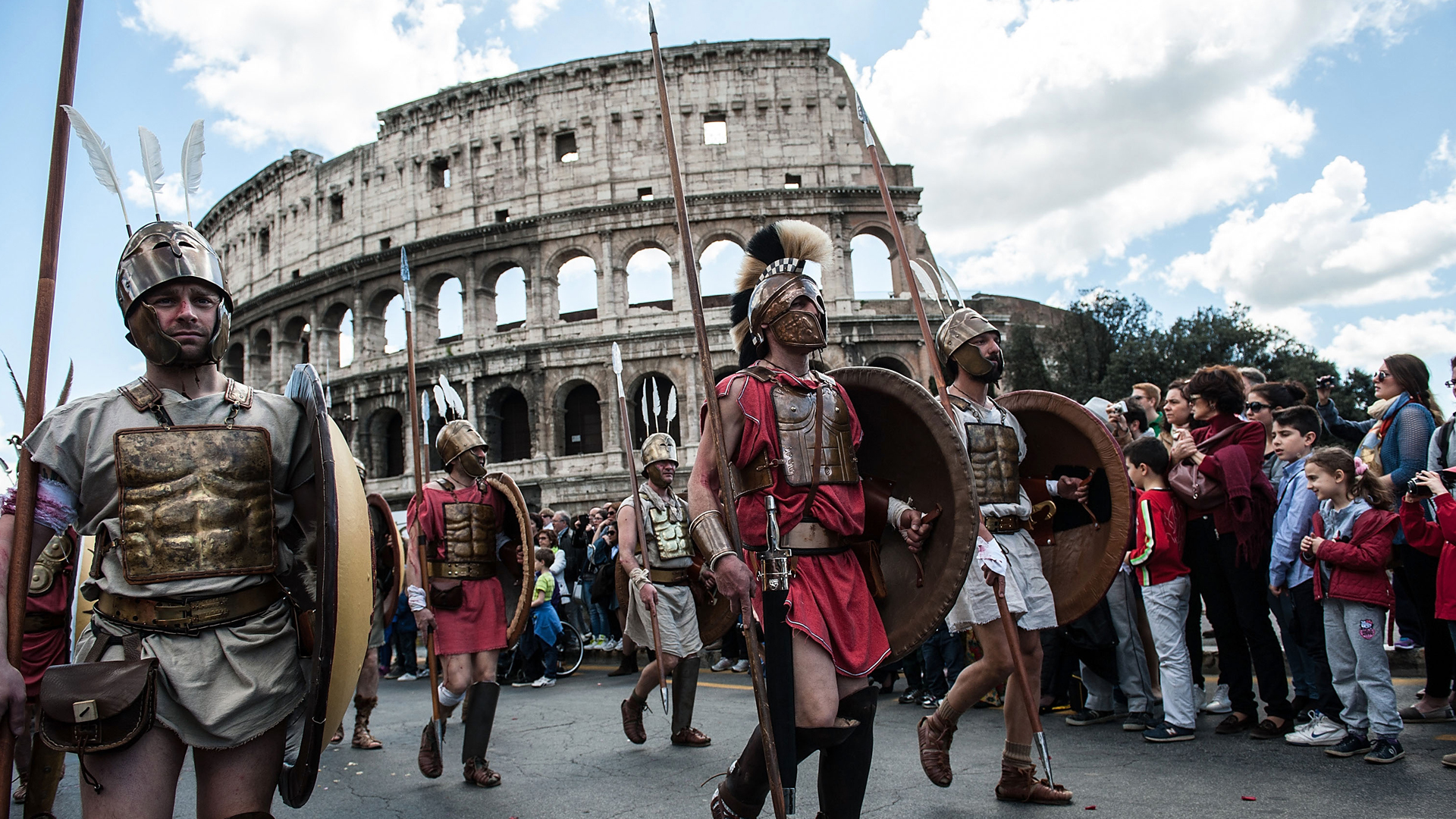
36. The Arch of Constantine
The Arch of Constantine is an impressive triumphal arch located near the Colosseum. Built in 315 AD to commemorate Emperor Constantine’s victory at the Battle of Milvian Bridge, the arch is adorned with intricate reliefs and inscriptions. It represents a blend of artistic styles from different periods, as it incorporates pieces from earlier monuments. Standing beneath its towering structure, visitors can appreciate its historical significance and architectural grandeur. The arch is especially striking when illuminated at night, providing a dramatic contrast against the backdrop of the Colosseum.
37. Santa Cecilia in Trastevere
Santa Cecilia in Trastevere is a serene and spiritually significant church dedicated to Saint Cecilia, the patron saint of music. Located in the Trastevere neighborhood, the church features a beautiful 9th-century mosaic in its apse and a stunning marble statue of Saint Cecilia by Stefano Maderno. The crypt beneath the church contains ancient frescoes and relics, adding to its historical and religious appeal. Visitors can also explore the adjacent cloister and garden for a moment of peace and reflection.
38. Via Veneto
Via Veneto is one of Rome’s most famous streets, synonymous with glamour and sophistication. It gained international fame during the 1950s and 1960s as the setting for Federico Fellini’s iconic film La Dolce Vita. Today, the street is lined with luxury hotels, upscale restaurants, and chic cafes. A stroll along Via Veneto offers a glimpse into Rome’s elegant side, with opportunities to enjoy a fine meal or simply indulge in people-watching.
39. Piazza della Minerva
Piazza della Minerva is a small but enchanting square located near the Pantheon. Its centerpiece is the Elephant and Obelisk sculpture by Bernini, a whimsical masterpiece that combines ancient Egyptian and Baroque elements. The square is also home to the Church of Santa Maria sopra Minerva, one of Rome’s few Gothic churches, which houses works by Michelangelo and other notable artists. The tranquil ambiance of Piazza della Minerva makes it a delightful stop on a tour of the city’s historic center.
40. Largo di Torre Argentina
Largo di Torre Argentina is an archaeological site that contains the ruins of four ancient Roman temples and part of Pompey’s Theater, where Julius Caesar was famously assassinated. Today, it’s also a sanctuary for stray cats, adding a unique charm to the historic site. Visitors can view the ruins from above and learn about their significance through informational plaques. The juxtaposition of ancient history and modern life makes Largo di Torre Argentina a fascinating spot to explore.

41. The Orange Garden (Giardino degli Aranci)
The Orange Garden, officially known as Parco Savello, is a peaceful retreat located on the Aventine Hill. This beautifully landscaped garden offers stunning views of Rome, including St. Peter’s Basilica framed perfectly by the lush greenery. The garden is named for its orange trees, which add a touch of vibrant color and fragrance. A short walk from the garden leads to the famous Aventine Keyhole, where visitors can peek through a perfectly aligned view of St. Peter’s Basilica. The Orange Garden is a favorite spot for picnics, romantic strolls, and breathtaking sunsets.
42. The Aventine Keyhole
The Aventine Keyhole, located on the gate of the Priory of the Knights of Malta, is one of Rome’s most unique attractions. Peering through the small keyhole reveals a perfectly framed view of St. Peter’s Basilica, surrounded by a hedge-lined path. This quirky and mysterious spot has become a favorite for photographers and curious travelers. While the view itself is magical, the keyhole also symbolizes the blend of history, art, and serendipity that defines Rome.
43. Piazza della Repubblica and the Fountain of the Naiads
Piazza della Repubblica is a grand square located near Rome’s Termini Station. Its centerpiece, the Fountain of the Naiads, features statues of mythological water nymphs and is a striking example of Neoclassical sculpture. The square is also home to the Basilica of Santa Maria degli Angeli e dei Martiri, designed by Michelangelo and built within the ruins of the ancient Baths of Diocletian. Piazza della Repubblica’s combination of ancient history and modern grandeur makes it a fascinating and photogenic destination.
44. San Pietro in Vincoli (St. Peter in Chains)
San Pietro in Vincoli is a historic church known for housing the chains believed to have bound St. Peter during his imprisonment. The church’s most famous attraction is Michelangelo’s statue of Moses, part of the unfinished tomb of Pope Julius II. The statue’s lifelike detail and powerful expression are testaments to Michelangelo’s genius. San Pietro in Vincoli offers both religious significance and artistic brilliance, making it a must-visit for those exploring Rome’s sacred sites.
45. The Pyramid of Cestius
The Pyramid of Cestius is a surprising and unique monument in Rome, blending Egyptian inspiration with Roman architecture. Built around 12 BC as the tomb of Gaius Cestius, a wealthy Roman magistrate, the pyramid is made of white marble and stands over 36 meters tall. Its stark geometry contrasts with the surrounding cityscape, creating a striking visual. Visitors can view the pyramid from the outside or explore the nearby Protestant Cemetery, where famous poets like John Keats are buried.
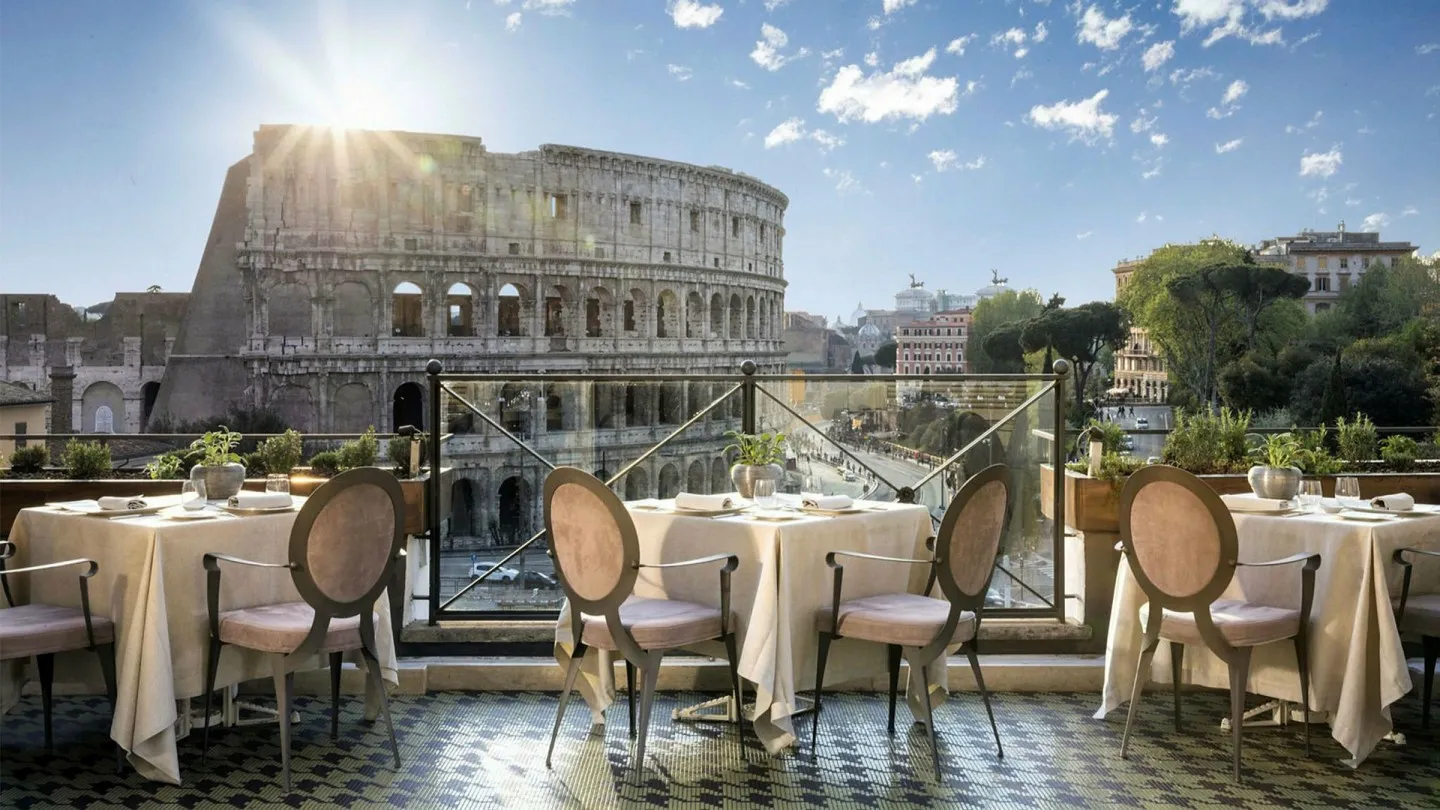
46. The Protestant Cemetery
The Protestant Cemetery, also known as the Non-Catholic Cemetery, is a tranquil resting place for many notable figures, including poets John Keats and Percy Bysshe Shelley. Located near the Pyramid of Cestius, the cemetery is beautifully landscaped, with cypress trees, blooming flowers, and peaceful walking paths. It’s a quiet and reflective spot that offers a poignant contrast to the bustling streets of Rome. Visitors often come here to pay homage to the literary greats or simply enjoy the serene ambiance.
47. Galleria Spada
The Galleria Spada is a lesser-known museum that offers an intimate and artistic experience. Housed in a 16th-century palace, the gallery features a collection of Baroque paintings by artists such as Caravaggio, Titian, and Guido Reni. One of the highlights is the Trompe-l’œil Perspective by Francesco Borromini, an optical illusion that creates the appearance of a long corridor within a much smaller space. The gallery’s compact size and exquisite collection make it a hidden gem for art enthusiasts.
48. Via dei Condotti
Via dei Condotti is Rome’s premier shopping street, lined with high-end boutiques and designer stores. Located near the Spanish Steps, it’s a haven for luxury fashion lovers, featuring brands like Gucci, Prada, and Valentino. Even if shopping isn’t on your agenda, a stroll down this elegant street offers a glimpse into Rome’s modern sophistication. The street also has historic cafes, such as Antico Caffè Greco, where writers and artists once gathered.
49. Quartiere Coppedè
Quartiere Coppedè is one of Rome’s most enchanting and offbeat neighborhoods. Known for its eclectic architecture, the area features a mix of Art Nouveau, Gothic, and Baroque styles. The centerpiece is Piazza Mincio, with its whimsical Fountain of the Frogs. Quartiere Coppedè feels like a fairytale setting, offering a stark contrast to Rome’s ancient ruins and Renaissance landmarks. It’s a favorite spot for photographers and those looking to explore Rome’s lesser-known corners.
50. Eur District and the Square Colosseum
The Eur District, developed under Mussolini in the 1930s, showcases a starkly modern side of Rome. The area’s architecture reflects the Fascist regime’s vision of a new Roman Empire, with geometric designs and grandiose structures. The most iconic building is the Square Colosseum (Palazzo della Civiltà Italiana), which features a grid of symmetrical arches. Today, the building is used as a headquarters for luxury fashion brand Fendi, blending historical significance with contemporary style. Exploring the Eur District offers a unique perspective on Rome’s multifaceted identity.
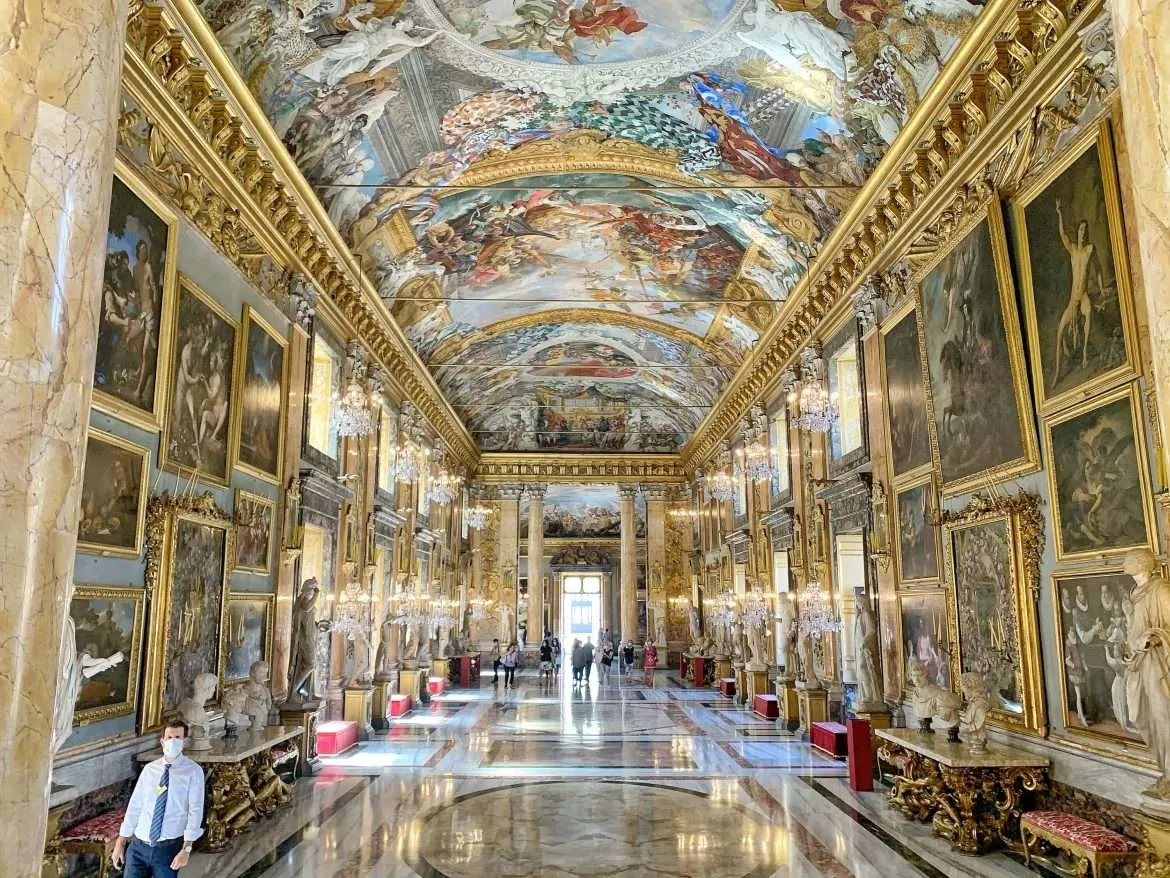
Rome is more than a city—it’s a journey through time, a celebration of art and culture, and an embodiment of human ingenuity. From the grandeur of the Colosseum and the spiritual reverence of Vatican City to the charming streets of Trastevere and the tranquil gardens atop Aventine Hill, every corner of Rome reveals a new treasure. This is a city where ancient ruins stand shoulder-to-shoulder with Renaissance masterpieces and modern-day vibrance, creating a unique tapestry that never ceases to amaze.
Exploring Rome’s top attractions provides a deeper understanding of its complex identity. It is a city shaped by emperors, popes, and visionaries whose legacies are etched into its architecture, art, and streets. Whether standing beneath the dome of St. Peter’s Basilica, admiring the breathtaking frescoes of the Sistine Chapel, or savouring gelato by the Trevi Fountain, visitors find themselves immersed in the magic that has captivated travellers for centuries.
